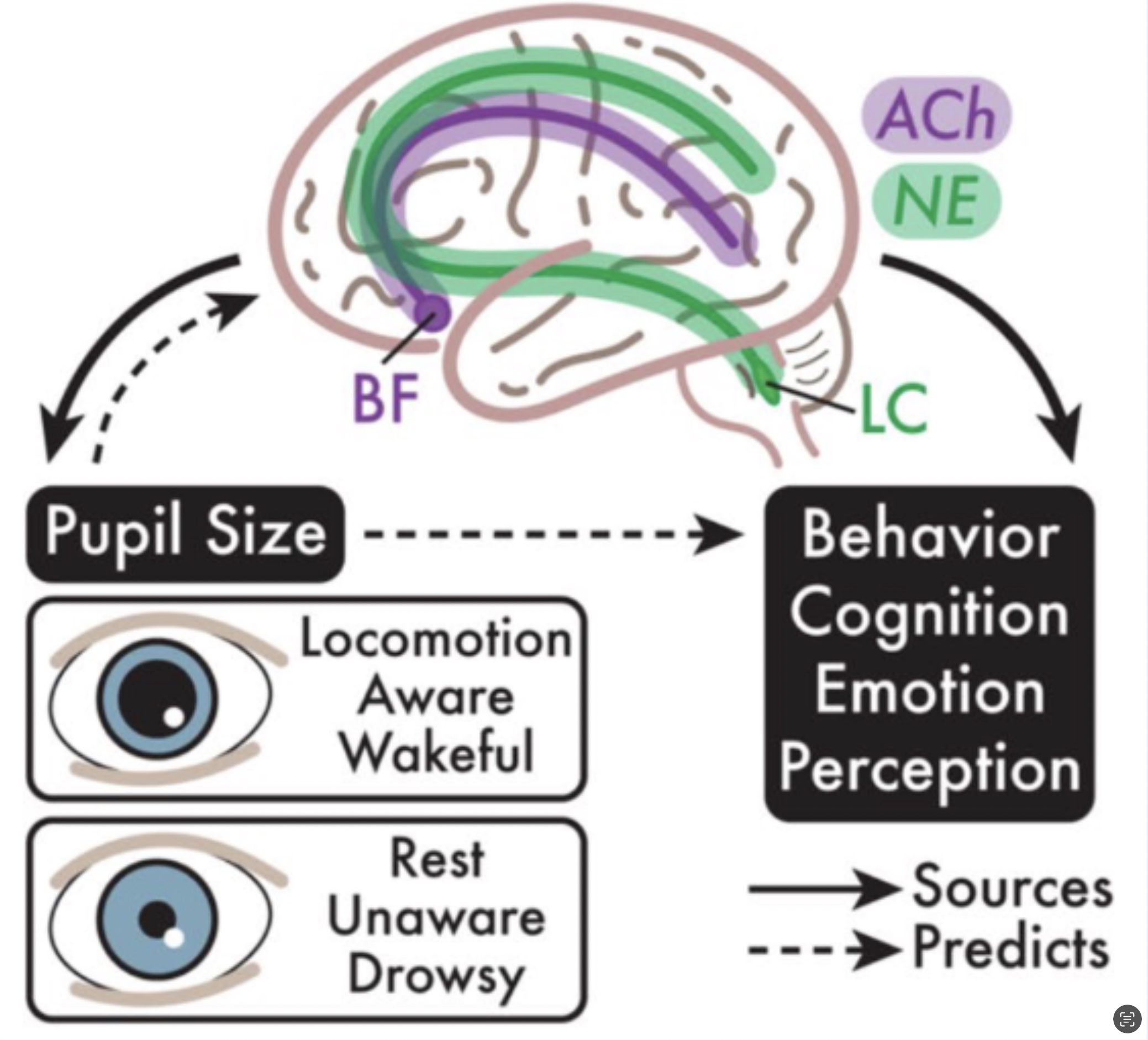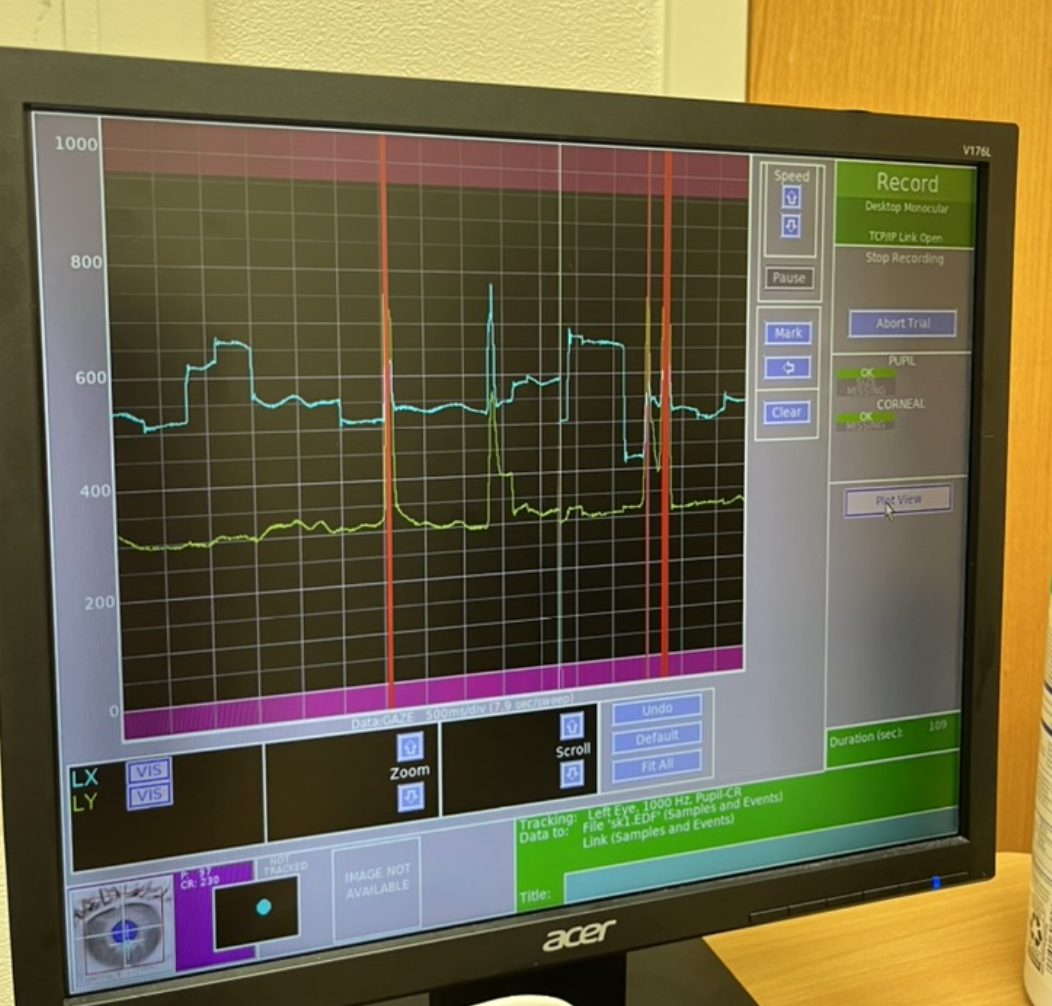Real-Time Pupillometry for Examining Pupil Phase Dynamics in Predicting Perceptual Behavior and Sensitivity

Figure 1: Pupil size is closely linked to the locus coeruleus noradrenergic and basal forebrain cholinergic systems. When there is increased locus coeruleus activity, this would cause increased pupil dilation independent of lighting or external stimuli. As these neuromodulatory systems have widespread influence across the brain, pupil size serves as a marker of broad neural activity, reflecting both conscious and unconscious sensory processing.
Goal: This project aims to understand the relationship between pupillary fluctuations, sensory-evoked neural activity, and conscious perception. We aim to (1) assess whether perception rate and behavior (e.g., reaction time) for visual and auditory stimuli correlate with pupil size trends (e.g., dilation versus constriction) and (2) examine if sensory-evoked brain activity (both perceived and non-perceived) is modified by spontaneous brain states indicated by pupil size trends.Task Set-Up: Healthy adult participants performed closed-loop visual and auditory detection tasks with simultaneous eye tracking, pupillometry, and magnetoencephalography (MEG). Task stimuli (images and tones) were presented when a custom real-time pupillometry software (rtPupilPhase) detected target pupil size trends.
Figure 2: Pupillometry was conducted using the EyeLink 1000 Plus system (SR Research, Inc.).